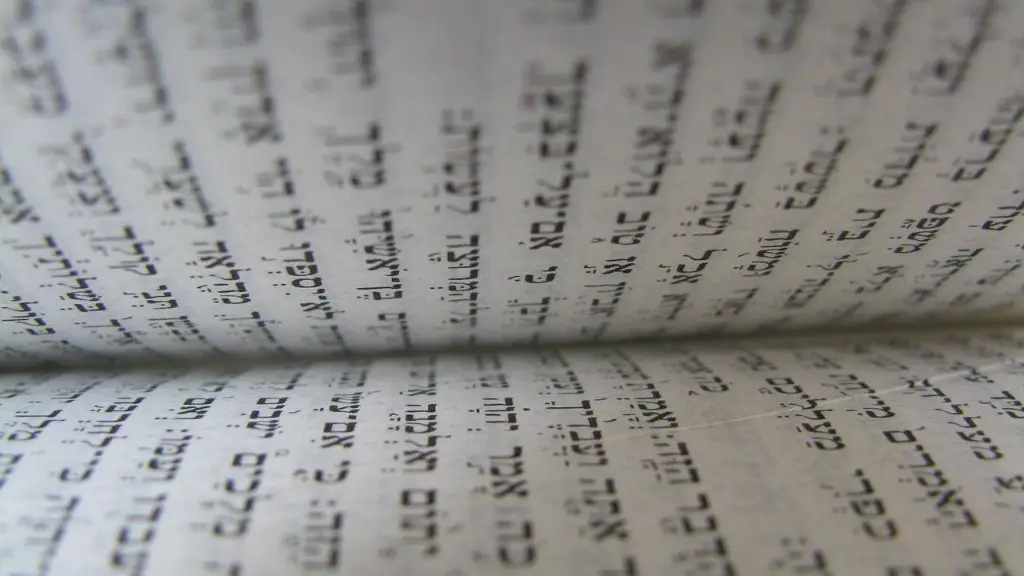East Byzantine Empire’s Impact on Russia
It is believed that the spread of orthodox Christianity to Russia began in the late 10th Century, when the East Byzantine Empire was at its peak of power. In 988AD, Grand Prince of Kiev, Vladimir I, officially declared the East Byzantine Christian faith as the state religion in a symbolic mass baptism ceremony. This event is widely beleived to have marked the beginning of a close relationship between Eastern Orthodox Church and the Slavic people, whom are the ancestors of modern-day Slavic nations, including Russia. As the East Byzantine Empire had grown in power, so too did its influence reach across the Slavic lands, expanding not only its faith, but also culture and trade.
It is no surprise, then, that the East Byzantine Empire’s influence had a considerable influence on the Kingdom of Kievan Rus’, which existed between the 10th and 12th centuries and is considered to be the forerunner of Muscovy and all its successors. As the Kievan Rus was a slavic state, its close ties to Constantinople influenced its religious, cultural and political development. For example, the Slavs adopted several aspects of Byzantine culture, including a script known as Cyrillic; moreover, spiritual and cultural contacts between the two empires resulted in a great number of manuscripts and liturgical works travelling from Constantinople to Kiev.
The importance of the East Byzantine Empire as a political host to the Slavs was too important to ignore. Its legacy can still be seen today – for example, the original text of the Christian Bible was translated from the Greek Old and New Testament into Slavonic language and written in Cyrillic by missioners known as the “Apostles to the Slavs”.
This movement had a profound effect on the Kievan Rus’ and saw the country blossom into one of the great powers of medieval Europe, an effect which lasted for centuries. In particular, Kiev Rus’s ruler, Vladimir I, adopted the Greek Christian faith and adopted it as the state religion. This move not only paved the way for greater political and cultural ties to Constantinople, but also for increased cultural exchange – for example, religious texts, official documents and literary works were all translated into Slavonic language. Moreover, the translations of the Bible would further spread the acceptance of Eastern Orthodox Christian faith in the Kievan Rus’.
However, the East Byzantine Empire’s influence in the Kievan Rus’ did not end with the adoption of its faith. In 1237AD, the Mongol Empire invaded and starting a period of chaos and destruction which lasted for several decades and ended Kievan Rus’s independence. Interestingly, the fall of the Kievan Rus’ had no immediate effect on the Byzantine Empire’s influence in the region as it became an integral part o the larger Mongol Empire, albeit under the rule and authority of the khans.
Grand Duchy of Moscow’s Role
The spread of Orthodox Christianity to Russia did not stop after Kievan Rus’ was destroyed. In fact, the faith continued to spread and grow as the Grand Duchy of Moscow emerged as an independent state in the early 14th Century. Under the leadership of Grand Dukes Ivan I and Ivan III, the Grand Duchy of Moscow was able to expand its territories, becoming the largest of all the Russian principalities. During this period, the influence of the East Byzantine Empire was still strong, as evident by the adoption of its version of the Cyrillic alphabet and the use of the Greek Christian Theology.
Grand Duke Ivan I, also known as Ivan the Great, took strides to strengthen the relationship between the Grand Duchy of Moscow and the East Byzantine Empire. This included the numerous gifts that he sent to Constantinople, including some of the most precious artifacts of the country. In return, the Byzantine Empire sent him relics of St. Sergius of Radonezh, a Russian saint revered in the Eastern Orthodox Church, and thus further strengthening the ties between the two countries.
Moreover, Ivan III restored the old title of “Grand Prince of All Russia”, further consolidating the Grand Duchy of Moscow’s status as the highest political power in the region. This development, in turn, led to the increased use of Orthodox Christian theology in the Grand Duchy, as well as its eventual adoption as the official state religion. This was a decisive moment in the spread of Orthodox Christianity in Russia that would lay the foundation for the further growth of the faith.
In addition, under the leadership of Ivan III, the Grand Duchy of Moscow was able to become an important cultural and political focal point in the region. This changed the balance of power and allowed for the expansion of Orthodox Christianity, which was further accelerated by the increased ties with Constantinople and other Christian states in Europe.
Tsar’s Expansion of the Church
Aside from the Grand Duchy of Moscow, the spread of Orthodox Christianity to Russia was also facilitated through the rise of the Tsars, who inherited the legacy of the Grand Duschy and expanded it even further. Under the leadership of Tsar Ivan IV, also known as Ivan the Terrible, the control of the Orthodox Church was increased, and it was declared to be the only legitimate Christian faith in the nation. During this period, the number of churches and monasteries increased drastically, and a strong hierarchy was established to influence the country politically, socially and economically.
As a result of the Tsar’s expansion, the Orthodox Church continued to grow and expand its influence beyond the Grand Duchy of Moscow and the territory of the old Kievan Rus’. Moreover, its importance was further reinforced as the theological and ideological center of the Russian state – for example, the Russian Orthodox Church provided a moral foundation for rulers like Ivan the Terrible and Tsar Peter the Great, enabling them to strengthen the power of the state. Additionally, the church enforced strict sanctions on those who did not follow its teachings and doctrine, thus further consolidating its authority.
It is also important to note that, in the 17th Century, the Patriarch Nikon of Moscow introduced several reforms in the Orthodox Church’s doctrines and theology – some of which were met with opposition and were later reversed. This period saw a great deal of theological conflict, with different factions adopting different interpretations of the Christian faith. Nevertheless, this did not stop the spread of Orthodox Christianity, which continued to influence the development of Russian culture, government and religion.
Civil War and Revolution
The influence of Orthodox Christianity in Russia changed drastically during the 19th Century, when a period of civil unrest and revolutionary activity engulfed the country. This period saw a number of social, political and religious reforms, which had a profound effect on the Orthodox Church and its teachings. The Tsar, for example, abolished the office of the Patriarch and placed the church under his direct control, a move that was met with resistance from some prominent religious leaders.
Furthermore, the civil war began saw a number of violent clashes between supporters and opponents of the Orthodox Church. Although the church itself was spared from the physical destruction, its standing and authority began to decline, as its opponents pointed out its links with the Tsar and its strict interpretation of the Christian faith. This resulted in a period of religious toleration, which would eventually lead to the embrace of other Christian denominations in the country.
The fall of the monarchy in 1917 marked a dramatic shift in the relationship between the state and the Orthodox Church, as the new communist regime adopted a far more hostile attitude towards religion. This culminated in the demolition of churches and monasteries and the arrest of prominent religious leaders, as religion was seen as the antithesis of the new regime. Thus, the spread of Orthodox Christianity to Russia stalled, as the state espoused a new ideological framework.
Recent Trends – National Reawakening
Fortunately, after the collapse of the Soviet Union in 1991, there has been a resurgence of religious activity in Russia, with the Orthodox Church becoming increasingly influential on many aspects of people’s lives. This rise in participation has been driven by a general sense of national reawakening, as the population seeks to understand its history and identity. As a result, the Orthodox Church has become the focal point for people looking for spiritual guidance, with many seeking the Church’s teachings on how to live a meaningful life in the modern world. Additionally, the Church’s message of social justice and equality has resonated with many people, who see it as a source of hope in an increasingly divided and polarised society.
Today, the Orthodox Church remains an integral part of Russian identity, with its influence transcending politics, economics and culture. This is evident in its close relationship with the state, its wealth of churches and monasteries and its active presence in society. Moreover, the Church continues to play a vital role in providing spiritual guidance to people from all walks of life – which only serves to strengthen its standing in the country.
Although the East Byzantine Empire’s influence on the Slavs was pronounced in the early Middle Ages, it is clear that its legacy has endured in modern-day Russia. From the adoption of its version of Cyrillic script to the spread of its faith by the Grand Duchy of Moscow, the East Byzantine’s influence can still be felt in Russia today. It is this legacy that continues to shape Russian identity, with Orthodox Christianity being one of its main pillars.
Developments Under Putin – Threats to Orthodoxy
The influence of Orthodox Christianity in Russia has grown under President Putin, whose rule has coincided with an increase in religious activity and an overall strengthening of the role of the Orthodox Church in the country. This has been primarily driven by the government’s close partnership with the Church, which has seen President Putin often visiting patriarchs and advocating for the protection of the Church’s values and traditions.
However, despite this increase in the Orthodox Church’s standing, the religion still faces numerous threats, especially from outside influences, such as the Evangelical Christian movement. This is a movement, which seeks to proselytise in Russia, and also has many followers in the US and other western countries. As a result, there have been ongoing debates between the Orthodox Church and the Evangelical Christian movement, with both sides claiming to have “the right” to spread their faith in the country.
Moreover, the Orthodox Church, and religion in general, continues to be threatened by the rise of atheism and agnosticism in the country. This trend, especially strong among younger people, has been fuelled by the growing emphasis on scientific knowledge, as well as the lack of accessible Christian education and spiritual guidance. This has caused many Russians to lose their faith and embrace a more secular lifestyle.
Although the future of Orthodox Christianity in Russia is uncertain, it is clear that the religion remains a major force in the country. Moreover, its legacy can still be seen in many aspects of the country’s culture, from the use of the Cyrillic alphabet to the presence of the thousands of churches and monasteries across the country. Therefore, it is safe to say that Orthodox Christianity will continue to shape Russia for generations to come.


